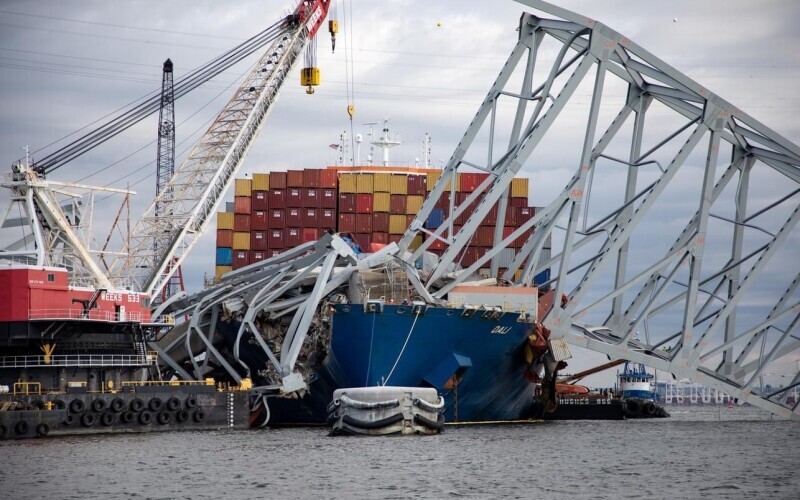Tugboats from the Baltimore area played an important role escorting the Dali cargo ship before it hit the Francis Scott Key Bridge, and they provided key services for removing bridge debris from the Patapsco River and refloating the vessel and bringing it back to port.
The captains of tugs from Moran Towing and McAllister Towing appeared with Maryland Gov. Wes Moore at a press conference on May 20 at which the governor thanked the towing industry for its professionalism and assistance in guiding the damaged container ship back to port seven weeks after the accident. Photos of the tugs assisting the vessel appeared in newspapers and on television news across the country, shining an unusual spotlight on the delicate work of tiny tugs that can maneuver massive ships.
But the work of such tugboats — at least in Baltimore — could be in for some changes as the Dali accident has prompted federal safety investigators to take a deeper look into the port’s tugboat-assist protocols. In a preliminary report on the bridge collision by the National Transportation Safety Board (NTSB), the agency says it will review these protocols as part of its sweeping investigation into the March 26 collision.
Released in May, the report offers the first detailed look at what went wrong as the vessel lost power, drifted off course and crashed into a bridge support, causing the span to collapse into the river, killing six construction workers who were on the span in the early morning hours. It offers a timeline of events before and after the strike and said that the Dali experienced two electrical blackouts the day before the accident and two more outages that disabled key equipment onboard on the day of the crash. The cause, which disrupted halted traffic into Baltimore for more than a month, remains under investigation.
The report notes that two tugboats, the Bridget McAllister, a 78', 5,080-hp tug with a 65-ton bollard pull and the Eric McAllister, a 98', 5,150-hp tug with a 66-ton bollard pull, guided the ship away from the dock and out of the port.
About 30 minutes later, a senior pilot with the Association of Maryland Pilots released the tugs, in keeping with port protocol, and the tugs returned to port. Fifteen minutes later, two electrical breakers that supply most of the ship’s equipment stopped, causing a power outage. The crew was able to restore power, the report said, the departed tugboats were called for help and the pilot ordered that an anchor be dropped. A second blackout occurred and soon after a warning call was sent, the Dali hit the bridge and the structure tumbled in seconds.
Speculation began almost immediately that had the tugs stayed with the ship to guide it under the bridge, the collision could have been avoided, and it was suggested that the port of Baltimore — as well as other ports — consider expanding their tug assist protocols to address broader safety risks. In Baltimore, tugs are required to assist vessels in and out of port but doesn’t require extended escorts into the port’s channel or further into the Chesapeake Bay. It’s up to harbor pilots, the Coast Guard or the shipping company to ask for extra services.
In its report, the NTSB agrees that a review is warranted. Federal investigators will probe into “oceangoing vessels’ propulsion and electrical systems; the frequency and causes of vessel contracts with bridges over navigable waters; and bridge-strike mitigation measures such as a combination of vessels-size restrictions, vessel-assist tugs, and bridge-pier protection.”
The tug industry, however, cautions that mandating federal tug assist protocols is not prudent or necessary. It argues that any changes should not be rushed and must be developed by individual ports rather than imposing a federal mandate on all ports regardless of their size, cargo handling or port configuration, Jennifer Carpenter, president and CEO of the American Waterways Operators, recently told WorkBoat.




